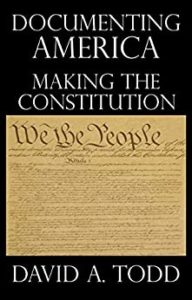
This is now the third (and I think the last) post in my series on defining characteristics of the USA—those things that make us stand out from all other nations: peaceful transfer of power.
When we made our second attempt at being a new and independent nation, under a new Constitution, George Washington became our first president. So revered was he that he could have been president for life. Actually, Americans might have accepted him as king. But Washington knew that someday power would have to transfer from him to someone else. Two terms was enough, he thought. Let the transfer happen peacefully.

You see, historically, transfer of power had been a violent affair. If it was peaceful, it was because a monarch’s heir was clearly popular with the people and with those in leadership who had surrounded the now dead sovereign. Going back a long way, it was common for the new king to kill the other potential heirs, assuring that he wouldn’t be challenged in his position and that, sometime in the future, power would transfer to his own heir, without challenges. Yet, even at that, the new king (or queen) would often be challenged. Looking through the kings of Israel in the Bible books of Kings and Chronicles shows frequent struggles in the first few months of the new king’s reign.
This also happened in Europe. At least three times in British history a king was overthrown. Sometimes it occurred without bloodshed. The nation had become more sophisticated, so potential rivals weren’t killed off. Heirs in other nations weren’t always so lucky. A study of the transfer of power in Europe would be fascinating. The same for other countries outside Europe.

What about in America? Washington declined to run for a third term. The nation elected John Adams as president in 1796. Power transferred peacefully and the baby nation chugged on. But Washington and Adams were of the same political mindset. What would happen when someone with different beliefs came to power?
That happened in 1800, along with the first of what would later come to be called a “constitutional crisis”. Thomas Jefferson was elected president. Actually, he tied with his vice presidential running mate, Aaron Burr. It took a vote by the House of Representatives to break the tie, and a constitutional amendment to correct a minor flaw in the relatively new document so that such wouldn’t happen again. The point is, however, Jefferson, of a different political party than Adams, came to power and all was peaceful. The nation chugged on. Adams wasn’t exiled; his children weren’t killed; Jefferson didn’t kill off or exile other potential rivals. The people didn’t riot in the streets over who became president. All was peaceful.
The new nation was showing that we could govern ourselves. Peaceful transfer of power from one party to another occurred. No coercive force was necessary. The American experiment was succeeding.
Looking at future elections, the peaceful transfer of power occurred all the way up to 1860. The South couldn’t accept Lincoln as president and his new political party as the one that would be setting policy and making laws. Rather than accept that, they declared themselves no longer part of the United States of America. The government said no, you can’t do that. We have property in your state and we will defend that property. The southern states said oh yeah? Just try it. And civil war broke out. The North won (as we know), and the nation stayed as one nation.
After fourteen peaceful transfers of power, including once at the death of a president, we had our first experience with violent transfer. It wasn’t pretty.
We had a questionable transfer of power in 1876, as the winner of the election was in dispute. I have more study to do of that transfer. Suffice to say that a compromise was reached, a president was selected through a combination of constitutional provisions and cooler heads who didn’t want to go through another bloody transfer prevailing.
From that time on, we had peaceful transfers all the way up to 2000. Even in 2000 the transfer was peaceful, though the closeness of that election required the judicial branch to get involved. Some say the judicial branch stole the election from Gore and awarded it to Bush. Some say Bush won it outright (by a tiny margin) and the courts simply prevented Gore from demanding endless recounts. Either way, while the transfer of power was in question, and while we wish it hadn’t come down to the Supreme Court, it happened peacefully.
Then came 2016. Trump won. Many people didn’t like it. The people who favored the other candidate took to protesting in the streets, though that died out. Transfer was contentious but, as the election wasn’t in doubt, was peaceful.
That brings us to 2020. While Biden appears to be leading and heading toward victory, that’s the way it was in 2016 and the outcome is not certain. But what is certain is that if Trump wins again there will again be protests in the street. Will these turn violent? Will the transfer of power—actually the need to not transfer power—be peaceful? Or, if Biden wins, will Trump peacefully allow the transfer of power to take place? Will we have a clear winner, or will the courts have to intervene again?
Peaceful transfer of power, a defining American characteristic. We are not far from seeing it end. It has happened because the people and leaders wanted it to happen, and because we had a supreme law that everyone accepted and revered. Right now we don’t know if either of them do. And that could have disastrous consequences of our country.